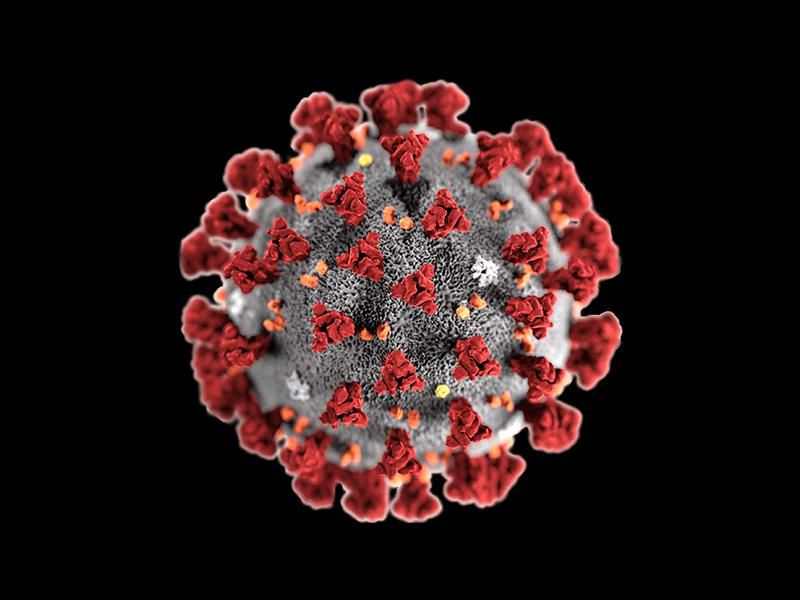
COVID-19 Updates Stay Informed with MyMD Miami’s Resources
Written by:
Robert A. Freedman, M.D.
Board Certified Internal Medicine and Infectious Diseases
Chief of Infectious Diseases Miami Jewish Health Systems
Chief of Infectious Diseases Kindred Hospitals of South Florida
info@mymd.us (Questions submitted will potentially be answered in future articles/updates)
—
As an Infectious Disease specialist in the community, who has been fielding phone calls over the past two weeks about the coronavirus from hospital administrators, nursing homes, schools, synagogues, businesses, and patients, it is clear there is a lot of misinformation and fear about this disease. I am therefore putting out a statement to try and answer many of the questions I have received, hopefully to provide guidance to our communities, and allay some fears.
Before discussing the history, details and implications about the virus, I want to emphasize one important key fact: at this point, we must practice social distancing. We cannot wait for an index case, because by the time the index case is known, the disease has mushroomed throughout the community.
Coronaviruses have been around for a long time. The majority of them cause a syndrome like the common cold. In the past two decades we have experienced two new novel coronaviruses, and now a third one. All three have originated from animals (i.e. animal to human transmission). The first was SARS (Severe Acute Respiratory Syndrome – from China) in 2002 to 2003, MERS (Middle Eastern Respiratory Syndrome – from the Arabian Peninsula) in 2012, and now COVID 19, specifically from an animal and seafood food market in Wuhan, China. These three new viruses can cause a severe pneumonia and sometimes death. SARS killed 770 people out of 8,000 infected, and MERS killed 3 or 4 out of every 10 people infected, according to the CDC. Unfortunately, because COVID19 is a novel/new virus, we have little information on its epidemiology (how it’s transmitted), and have no antiviral therapy or vaccines at this time. Therefore, the majority of my statements will be based on current knowledge that has been acquired over the past few months. As we have more experience with this virus, some of the information and beliefs about contagion, transmission, incubation, and mortality that I am going to discuss, may change.
COVID19 as of Wednesday 3/11/20 has been declared a pandemic by the World Health Organization. This essentially means it has spread worldwide. Transmission is believed to be from respiratory droplets from people coughing or sneezing which are inhaled by another person or “hand to mouth”. If you shake somebody’s hand or touch a surface that has the coronavirus, and then you touch your mouth, nose, or eyes, you can contract the virus. You are essentially placing the virus onto one of your mucosal surfaces (mouth, nose, or eyes). This is why you hear all the recommendations about repeatedly washing your hands or using hand sanitizer. People would be surprised how many times they touch their mouth, nose, or eyes throughout the day. This is also why they recommend not shaking hands. The most recent data suggests that respiratory droplets carrying coronavirus can remain in the air for up to three hours, which would increase the contagion. They can also stay alive on surfaces such as plastic and stainless steel for up to 3 days, copper surfaces for 4 hours, and cardboard for up to 24 hours. There is also some data that suggests if it is like SARS and MERS, it could remain on metal, glass, or plastic for up to 9 days. In contrast, our knowledge of flu/influenza reveals that it can only remain on surfaces for 48 hours. In a study published in the Journal of Hospital Infection, it was suggested that Coronaviruses could be effectively inactivated by disinfectants that contain 60-71% ethanol, 0.5% hydrogen peroxide, or 0.1% sodium hypochlorite within 1 minute.
The current incubation period is believed to be between 5 to 14 days. This is why people are being quarantined for up to 14 days. Additional concerns with respect to transmission are that it appears people can be contagious prior to developing any symptoms. This is very dangerous, since if someone is well, the individual and his contacts assume that he or she is not contagious. This contributes to the rapid spread we have been seeing. While we are still acquiring more information about transmission, there is some data that suggests that once the patient resolves from their infection, they’ve still been able to isolate the virus from their secretions up to 50 days!
Although the illness can infect anyone, it appears that the disease and its complications are more severe in the elderly and people with immune compromised conditions. Young people seem to fare well with the illness and recover. With respect to disease course, in approximately 80% of the patients the symptoms are slightly milder than the flu, that is: runny nose, sore throat, cough and fever. In severe cases, people can have difficulty breathing. 20% of the patients will develop complications such as Covid 19 pneumonia, and 15% of those will die. As stated above, this mortality is more in the elderly and people with pre-existing immune compromised conditions.
Although the current mortality rate is quoted as 3.4% when compared to the flu which has a 0.1% mortality, I personally believe that the mortality rate from this disease is much less than 3.4%. This is because a majority of patients have a mild illness similar to a cold or mild flu, and they do not come to clinical recognition, that is, they never see a doctor. Mortality rates are calculated based on putting the number of deaths in the numerator and the number of people with the illness in the denominator. Since a large proportion of people are not reporting their illness, because they’re not very sick, the denominator is actually much larger than the current data suggests, which would bring the mortality rate down significantly. I believe as we get more experience with this virus, and have more testing, we will see a fall in the mortality rate.
The classic teaching in Infectious Diseases is to isolate contagious diseases. This is why, travel has been restricted, schools have gone to virtual classrooms, parks and museums have closed, and the NBA has cancelled the season, etc. Social distancing is extremely important. We need to isolate this virus and let it “burn out” within each community, not allowing anyone else in who could carry the virus back into the community. Unfortunately, these decisions are extremely costly, which has delayed the decision to practice social distancing. As leaders however, we have a higher responsibility, not just to ourselves, but to the entire community, and I believe these tough decisions need to be made. This is classical Infectious Disease principles, and if they are adhered to properly and in a timely manner, we will be able to stop the spread. Waiting for an index case to occur in the community before we start practicing social distancing is very dangerous. By the time the patient is diagnosed, they’ve had contact with multiple people, those people have had contact with multiple people, and the disease has already mushroomed and spread throughout the community. Therefore, one should not wait for an index case. There are currently no recommended/approved antivirals (medications) to treat this illness, nor is there a vaccine at present. But we are currently studying some antivirals that may have some promise, and are trying to develop a vaccine as well.
I want to assure the community that the United States of America has the best healthcare system in the world. We have an infrastructure that is unparalleled. There is a Department of Health in every major city in the United States. We have the CDC, and the National Institute of Allergy and Infectious Diseases, headed by one of the most prominent physicians in the world, Dr. Anthony Fauci. By following the recommended principles and guidelines, we will be able to stem the tide of this pandemic.
I hope this has been informative and educational, and that I have answered some of your questions and concerns.


